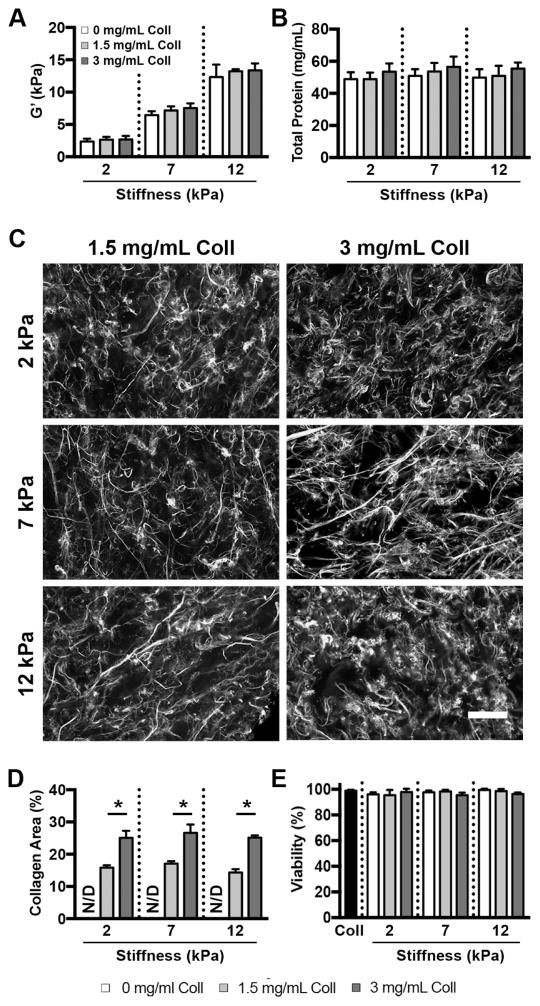Figure 2.
Scaffold stiffness and collagen content can be independently tuned in gelMA/collagen gels. (A) GelMA/collagen hydrogels were fabricated at 3 stiffnesses (2, 7, and 12 kPa) and collagen content was varied from 0–3 mg/mL, n=3 (B) Despite variations in collagen content and matrix rigidity, the total protein content was not significantly different across the gel conditions (p>0.05), n=3 (C) CNA35-EGFP labeling of gelMA/collagen hydrogels revealed a randomly oriented, fibrous network of collagen. Scale bar = 100 μm. (D) The area occupied by fluorescent fibrillar collagen increased with increasing collagen content and was not significantly affected by changes in scaffold stiffness. * indicates p<0.05. N/D indicates not detectable, n=3 (E) BAEC viability in gelMA/collagen gels was similar to collagen-only gels (Coll) at 48 hours post embedding (p>0.05), n=3. Data represent mean ± standard deviation.

